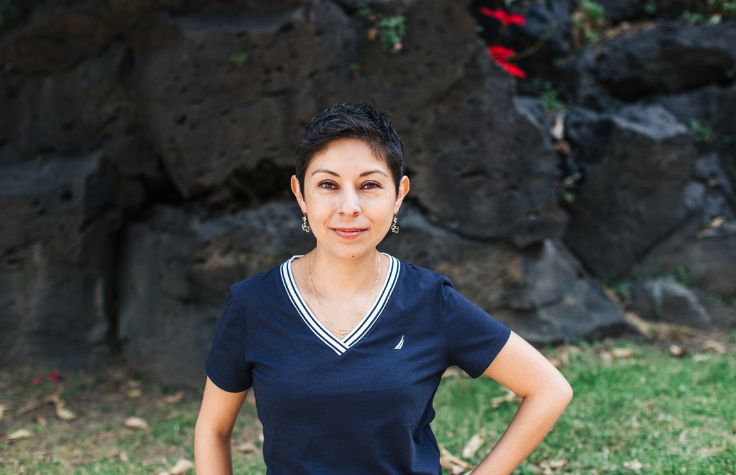
July 22, 2024
Rapid whole-genome sequencing (rWGS) is an alternative to standard whole-genome sequencing, with the potential to offer fast and accurate diagnosis of rare genetic disease in critically ill infants in under 50 hours. In early 2023, ARUP Laboratories, a national reference lab based in Salt Lake City, added rWGS to its menu of tests, providing a critical tool to inform care.
“ARUP is an amazing reference laboratory that we have the benefit of having in our backyard here at the University of Utah,” says Sabrina Malone Jenkins, MD, associate professor of Pediatrics in the Division of Neonatology. “I remember sending tests to ARUP from the East Coast, so being so close to this laboratory and watching them push the technology we are offering patients has been incredible.”
The precision and speed of rWGS
Acutely ill infants with a suspected genetic disease who are admitted to a neonatal intensive care unit (NICU) may have a critical window to receive a diagnosis and care. Offering rWGS as a first-tier test early in the NICU admission when the underlying cause of disease is unclear can lead to a shorter time to diagnosis and inform care faster. With rWGS, labs comb through patients’ genomes to identify genetic variations that may be causing their conditions.
“All of the available data indicates that rWGS should be a standard-of-care test for children in the NICU with a suspected genetic diagnosis,” says Hunter Best, PhD, medical and scientific director of Genomics at ARUP Laboratories. “We are incredibly excited to be able to offer this critical test.”
ARUP has taken advantage of Illumina sequencing systems to provide valuable information in a matter of days. This timeliness means neonatologists can use genomic data to better treat sick infants.
“Our whole purpose is to make these babies better,” says Malone Jenkins. “This test helps us personalize care for each infant, making sure we’re screening for the right things and not putting them through unnecessary and potentially painful procedures.”
Malone Jenkins and her University of Utah colleagues helped spearhead the test, providing all-important validation samples. In this collaborative research project, called NeoSeq, ARUP conducted the sequencing while the Utah Center for Genetic Discovery and ARUP performed the analysis.
Now that proven clinical utility has enabled rWGS to become more widely available, the research has pivoted. Even with all its power to analyze the genome, rWGS still only finds answers in around half the cases. Malone Jenkins notes that even a negative result can be clinically valuable, but they are constantly looking for ways to increase sensitivity.
“We’ve integrated a reanalysis workflow, where all the cases are reanalyzed each year,” she says. “Sometimes, in the first weeks, neonates haven’t fully developed their clinical presentations for us to ask the right questions of that DNA data.”
ARUP and the University of Utah NICU staff bring complementary skills to the partnership: ARUP has tremendous experience analyzing data, and the NICU team provides their clinical perspectives and expertise.
“What makes this test so powerful is the multidisciplinary approach of having labs and clinicians working together to get the most out of the information,” says Malone Jenkins. “We often ask whether our interpretations make sense. Also, a patient may have a new clinical sign, and ARUP can go back and check that against the sequence.”
Taking care of baby and parents
When ARUP and the neonatologists find disease-causing variations, parents need reassurance that they’re making the best decision based on the information provided by rWGS. Clinical research coordinators work with families to navigate results and therapeutic choices.
The ultimate payoff is finding answers and beginning successful treatment. One baby in the University of Utah NICU was born prematurely at 31 weeks, with bruising and abdominal fluid buildup. In addition, their bone marrow was not producing enough platelets. And to complicate matters, the parents had lost a previous baby at eight days, giving the team further urgency.
“This really showed the test’s utility and how it can directly change clinical care in real time,” says Malone Jenkins. “This baby came out sicker than expected and had features that couldn’t be explained by being born a little early.”
On day one, samples were sent to ARUP for analysis. Five days later, they had identified two disease-causing variants, including one for familial hemophagocytic lymphohistiocytosis-3, in which an overactive immune response can damage organs. The hospital’s bone marrow transplant team was immediately called in to begin testing and treatment.
“Having that genetic data from the beginning gave us a conclusive answer,” says Malone Jenkins. “We didn’t have to wait for other test results; it was like we beat the progression. We weren’t reacting to the disease, we were anticipating it.”
While rWGS is incredibly helpful in the NICU, its applications could be much broader. Baseline genomic sequences could support better care through childhood, adolescence, and adulthood. That calls for making genomic sequencing more broadly available.
“I want everyone to have access,” says Malone Jenkins. “I don’t want this to be a technology that only benefits babies at the University of Utah NICU. I want to make sure that, no matter where a baby is born, we build a system that supports them.”


